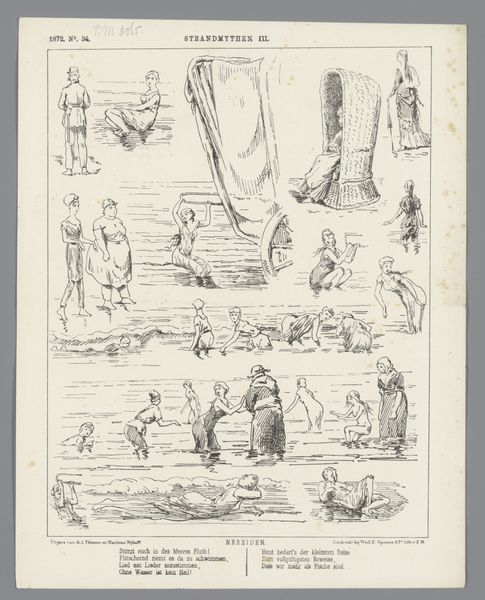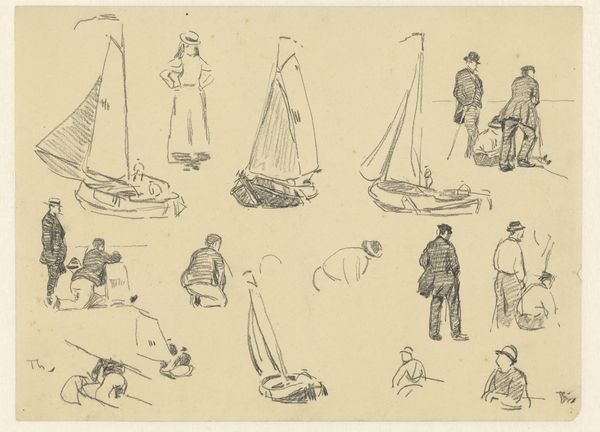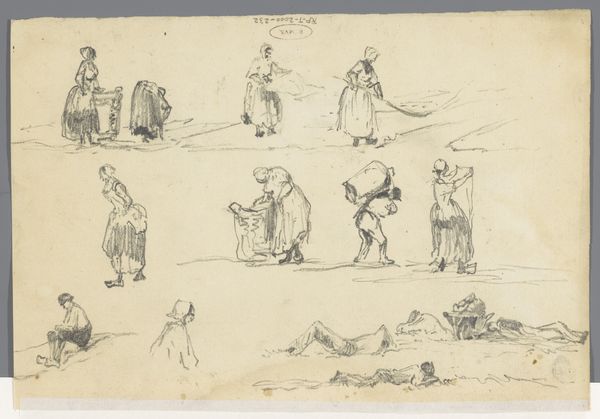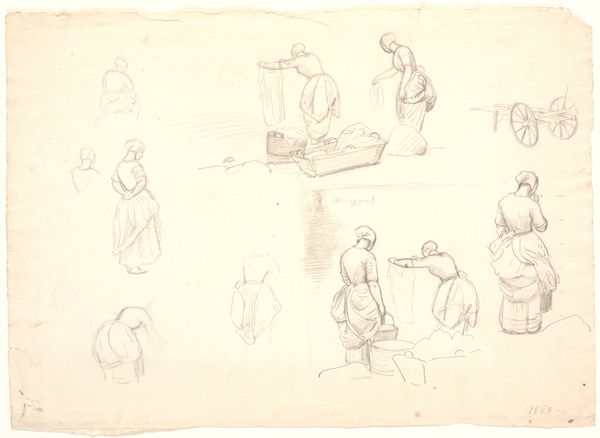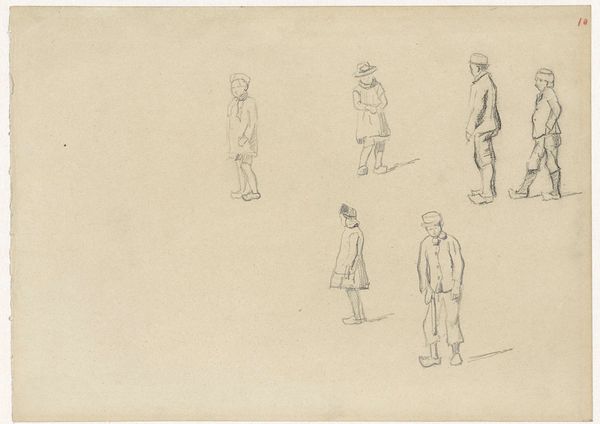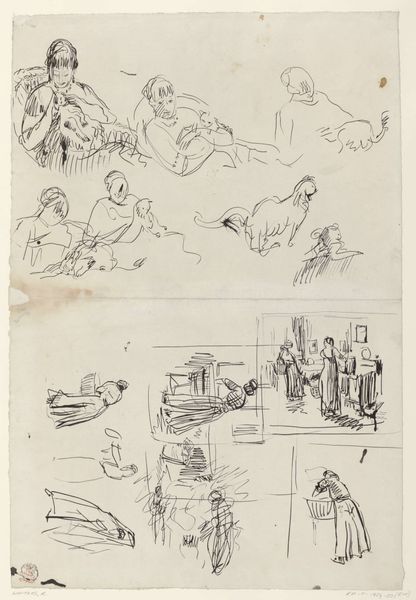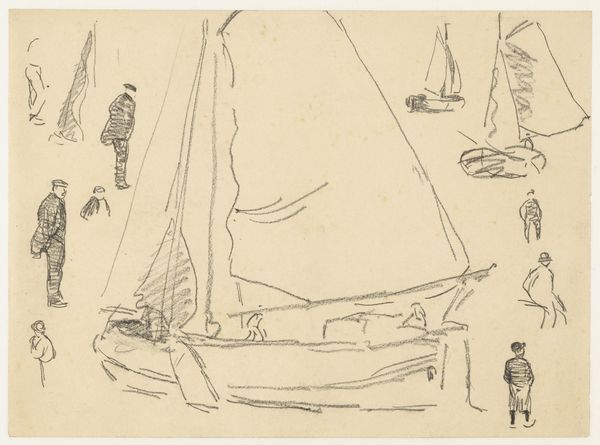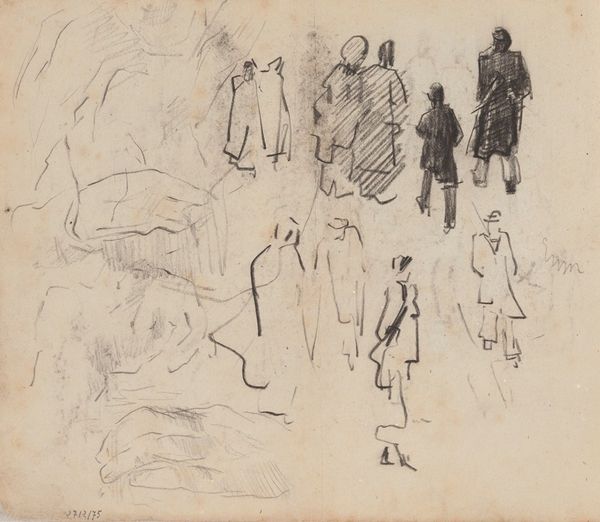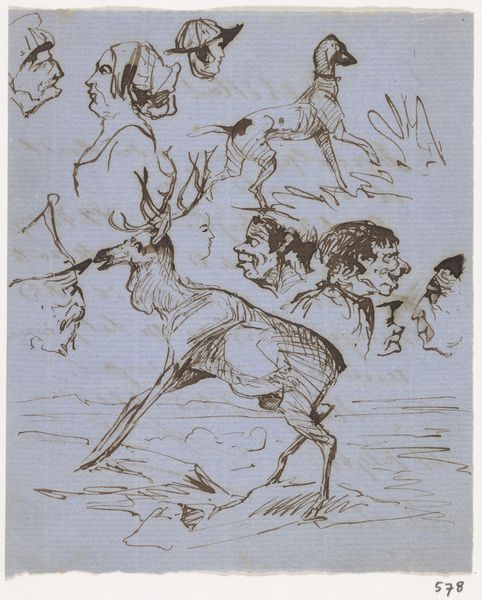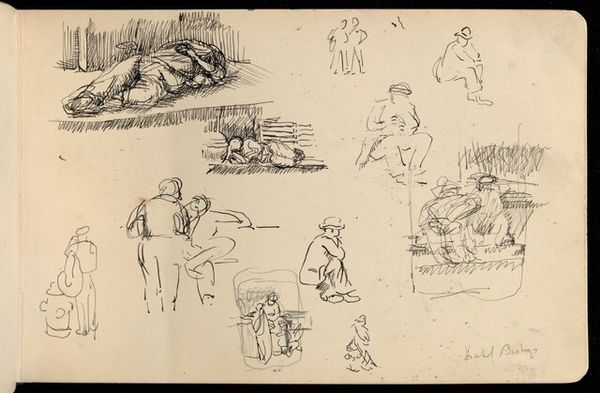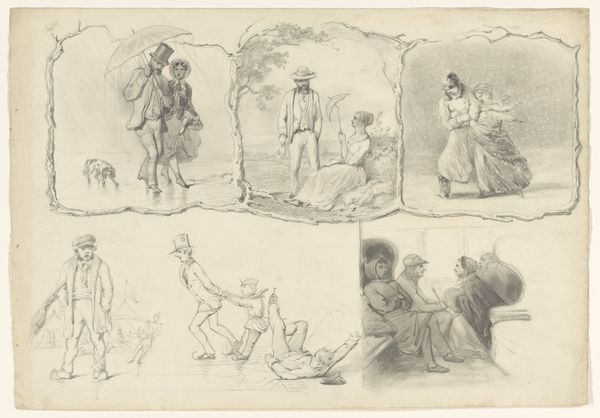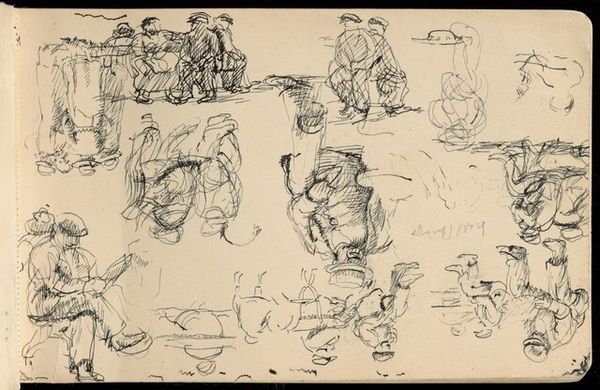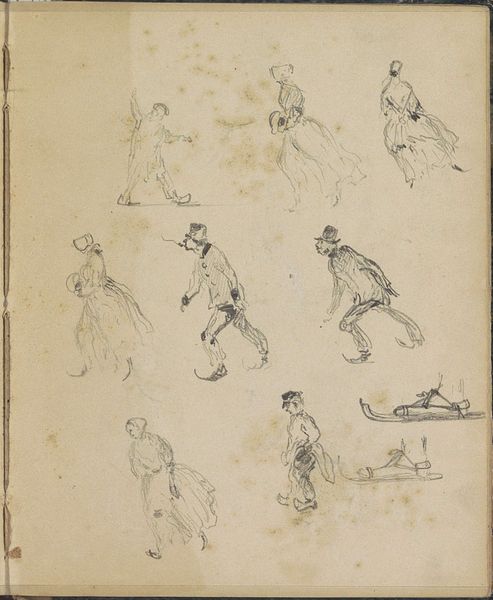
Studieblad met diverse figuurstudies, vissersbootjes en studies van meeuwen 1870 - 1931
0:00
0:00
willembastiaantholen
Rijksmuseum
Dimensions: height 308 mm, width 225 mm
Copyright: Rijks Museum: Open Domain
Editor: So, this is “Studieblad met diverse figuurstudies, vissersbootjes en studies van meeuwen,” a sketchbook page by Willem Bastiaan Tholen, dating from 1870 to 1931, rendered in pencil and ink on paper. It feels like a quick glimpse into the artist's world, all these sketches jumbled together. What catches your eye? Curator: The interesting aspect of this sheet lies in understanding it as a record of labor. Consider the fisherman and the boat builder represented here. What does their depiction, rendered with such simple materials, reveal about Tholen's interest in the working class and the maritime industry that supported it? The very choice of pencil and paper emphasizes the accessibility and everyday nature of both artistic production and the labors depicted. Editor: That's a different perspective. I was mostly thinking about it as a visual diary, but the focus on work makes sense. How does the fact that it's a study sheet impact your interpretation? Curator: The “study sheet” designation invites us to examine the act of sketching itself. Note the repetition of forms, the economical lines defining human figures. This hints at an active engagement with observation, refining the ability to represent these figures, essentially a preparation for later works. It underscores a connection between art making and skilled labor; the hand, eye and materials involved in production of the artwork are also used by workers shown within. Does this suggest something about the status of "high art" versus other forms of work during that time? Editor: Hmm, almost as if Tholen is saying that the fisherman's skill is as valid as his own… And by sketching, he’s almost mimicking the work, practicing it. That really opens it up. Curator: Exactly! And where do these sketches situate themselves socially and politically, particularly given the rise of industrialisation? It begs us to contemplate the material circumstances under which both artist and subject existed. Editor: That's a lot to think about. It makes this seemingly simple drawing much more complex. Thanks for pointing out the labour and material aspects; it’s not just a visual diary. Curator: My pleasure. Reflecting on materials and context shifts how we value the art. I learned something by focusing on that myself.
Comments
No comments
Be the first to comment and join the conversation on the ultimate creative platform.
